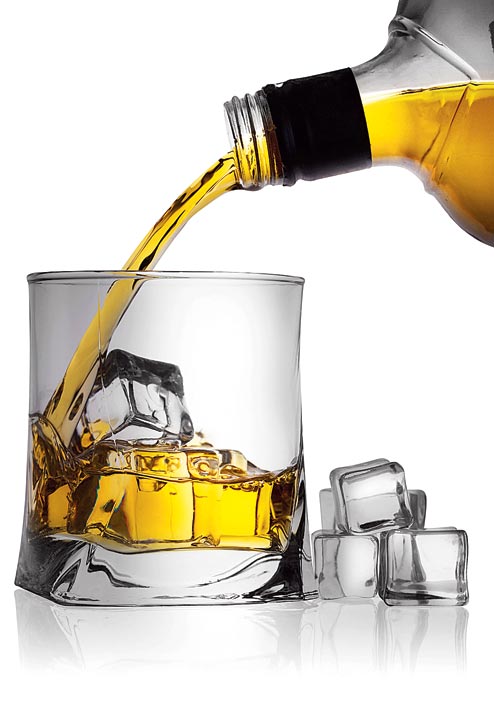
Few spirits have stood the test of time like whisky. Whether on a remote Scottish island, back in the wild days on the American frontier, or during the industrial boom in Asia, whisky has been at the forefront of human endeavour and has written itself into our history.
However, for such a widely available spirit, it can range hugely in flavour, production methods and ingredients depending on what your particular tipple is, and where in the world you prefer your whisky to come from. Having just celebrated International Scotch Day (February 10), it is a great time to have a look at how this spirit is enjoyed around the globe and where Scotch whisky is headed.
So, let’s start looking at what’s changed for Scotch whisky in recent times. Firstly, the way we view and enjoy Scotch whisky is hugely different now from the way it would have appeared in history. Our notion of the beautiful, golden-hued, smooth, aged spirit is a relatively new one. For Scotch to legally be called a Scottish whisky it has to be matured in oak casks for a minimum of three years, but the chances of finding a three-year-old malt or blend in India today is extremely slim. In the past, whisky would have been had young, possibly days off the still. Today, if anyone had a chance to taste ‘new make’ in Scotland, or ‘un-aged’ whisky, it would be a million miles away from that rich and flavourful 12-year-old The Singleton of Glen Ord you may have had in your glass last night.
The process of maturation in oak barrels, or casks, is not only to filter out any impurities and inconsistencies in the spirit but also to let the barrels impart their own flavours to the whisky as it mellows and rests in the wood. For example, American oak is widely used in Scotland since it has easy access to barrels coming from the US, where they can legally only be used to age whisky. The barrel gives off notes of vanilla, toffee, caramel and, sometimes, even light fruity notes like banana and pineapple. When it comes to European oak, most often the barrels are the ones that are used to hold sherry from Spain or port from Portugal. They give off far more mixed notes. These barrels are sourced and used by distilleries and blenders to create particular nuances or house a desired style to make up the composite parts of your favourite whisky!

MAN’S DRINK? HUH!
On my travels I have definitely seen whisky go from being seen as a ‘man’s’ drink, to being something enjoyed in many different ways. For example, whisky is nowadays increasingly paired with food in matching set dinners and people are mixing single malts in ways thought crazy 20 years ago. (Try a Lagavulin 16-year-old and Coke, trust me!) In certain countries, for example in Spain and France, it is quite common to see a group of ladies at a table enjoying some smoky Islay single malts and, globally, in the world’s best bars, whisky is being used as a base for light and refreshing cocktails as well as your more classic Old Fashioneds and Rob Roys.
TASTE, TRUST... ENJOY!
In India, I see whisky regularly being had tall with ice and a mixer, something that makes sense in a warmer climate. Soda water or ginger ale will lengthen your whisky. It will also complement the smoke and spice or sweetness of your chosen malt or blend.
To round it up, Scotch whisky has travelled the globe and is enjoyed in different ways. In every place, it has found a home. So, experiment! Taste new malts and blends, trust your bartenders to make you new and exciting cocktails, but, most of all, trust your own judgement and enjoy responsibly with friends.

Types of Scotch

Single Malt: Must be made entirely of malted barley in a single distillery and matured in oak casks in Scotland for at least three years. Each distillery has its own unique style and character because of ingredients, production techniques and maturation. Like The Singleton, the single malt Scotch whisky of Glen Ord.
Single Grain: This too is a product of a single distillery, but the malt can be made from grains like wheat and corn along with barley. These are made in continuous stills to give a light and subtle flavour. For example, the newly released Haig Club is lighter on the palate and ideal for mixing with soda water or your favourite soft drink.
Blended Malt: The product of more than one distillery. A combination of different single malt Scotch whiskies is used to achieve a specific flavour and character. Known for their consistency, they comprise over 90 per cent of the global market.
WALKER TALKER
MYTH AND REALITY
How should one enjoy a Scotch Whisky? With ice? With a drop of water? Straight up? There is no correct way to answer this. I recommend you enjoy your whisky however you wish, there is no right or wrong way.
Neat or mixed? You must drink it neat, is one the biggest myths about whisky. It can actually be enjoyed with a variety of mixers. Whisky cocktails have become quite a rage across the world and are created using some unique fruits and local ingredients.
What about water? You will often hear people talking about adding water to whisky. Water helps a whisky open up in the glass. A chemical reaction occurs between the water and the tightly-wound chains of amino acids in the whisky. They literally unravel, releasing new flavour compounds and esters.
Warm or cold? There is no right or wrong temperature when it comes to serving whisky. In hot countries people enjoy whisky as a more refreshing, cold drink, served from the fridge or freezer and in combination with various mixers. Warming the whisky enhances the spicier elements, bringing to the fore cinnamon and allspice. So, there are benefits for serving warm and cold, believe it or not. Everyone’s tastes are different, that’s what makes the world interesting!

Jamie Walker is the USL Diageo Reserve brand ambassador for south India.
He has worked for 13 years in the hospitality industry in
Europe and, most recently, in Australia .
Follow him on Twitter @walkingonwalker










